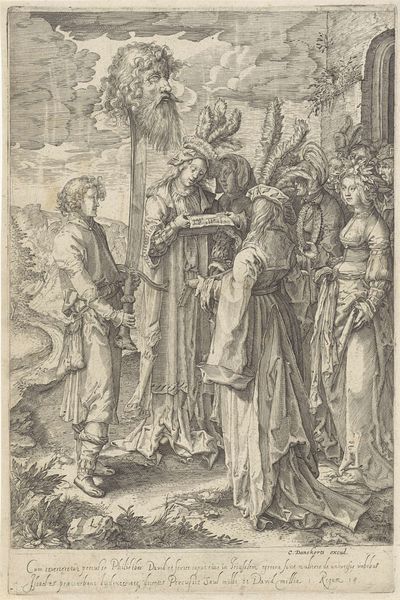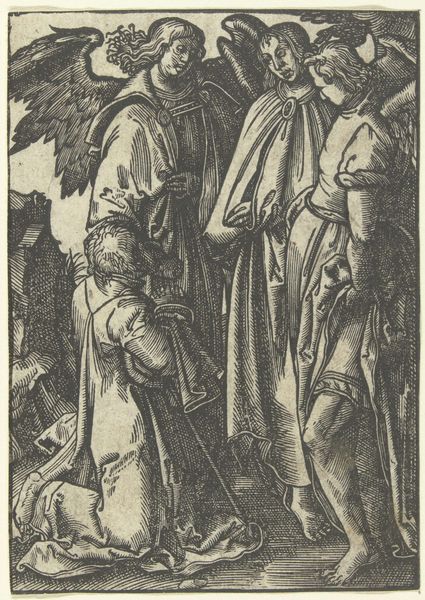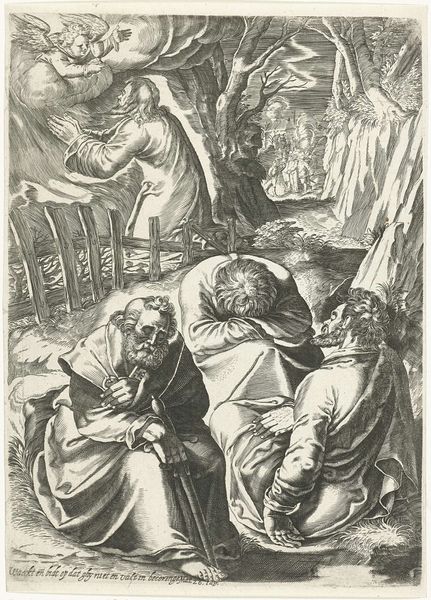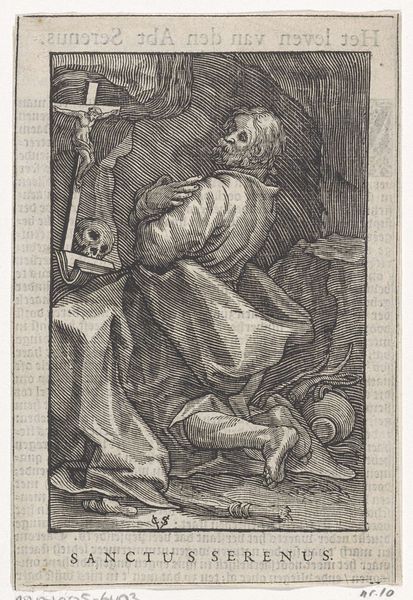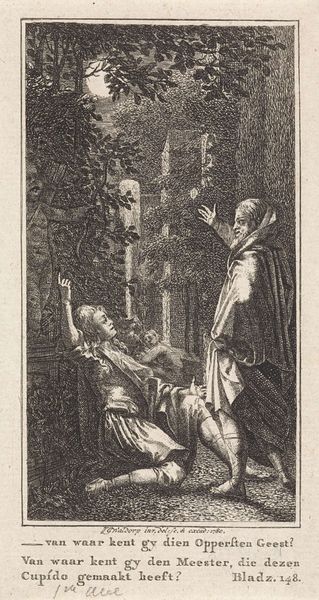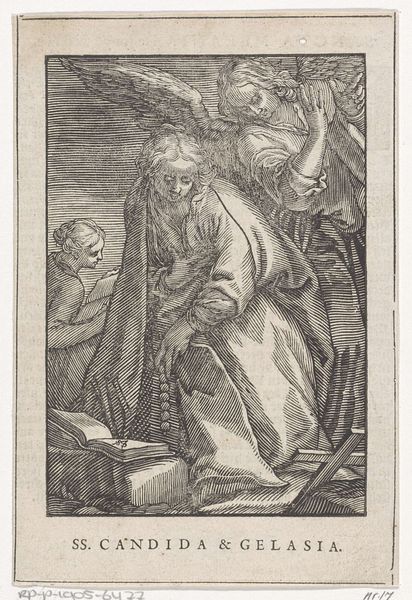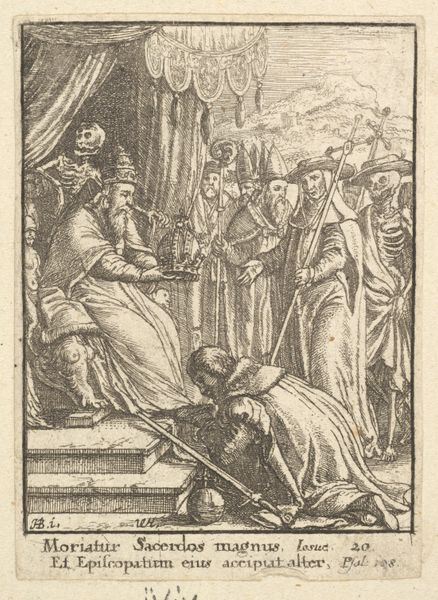
print, engraving
#
pen drawing
#
mechanical pen drawing
# print
#
pen illustration
#
pen sketch
#
figuration
#
history-painting
#
italian-renaissance
#
engraving
#
christ
Dimensions: height 131 mm, width 100 mm
Copyright: Rijks Museum: Open Domain
Curator: Looking at this print, Christus verschijnt aan Maria, created by Marcantonio Raimondi between 1510 and 1515, it's interesting to observe the labor involved in producing such a detailed engraving. Editor: The textures! The varying line weights! It almost crackles with energy. There’s a strong contrast between the darkness and the light, underscoring the emotional intensity. The encounter feels both intimate and overwhelming. Curator: Exactly. Considering Raimondi's engraving technique, the means of production allowed for a wider dissemination of imagery, influencing artistic styles and devotional practices across Europe, it must have involved such painstaking, repetitive work to realize the final form. Editor: And what’s fascinating to me is how this distribution shapes the reception and interpretation of religious narratives. Look at how Mary is portrayed – kneeling, hands clasped in prayer. How much of that image has seeped into our collective understanding of femininity and piety through repeated exposure over centuries? Curator: Yes, the reproductive nature of the print allowed the consumption and adoption of particular iconographies that serve socio-religious functions beyond the high art sphere. I wonder what kind of tools were available to create it... Editor: That's right. This wasn't simply about artistic skill; it was about social power and cultural authority reproduced en masse. It tells us much about both 16th-century gender roles and religious beliefs. Curator: Indeed. When we examine the engraving's materials and its context within the broader printmaking industry of the Renaissance, we start to see how such images shaped collective belief and even controlled cultural production, by mediating what religious subjects would or would not resemble. Editor: Precisely. The social impact of visual narratives like these is enormous. It becomes clear that the scene isn't just depicting the divine, it is helping dictate societal norms. These engravings played a major role. Curator: Absolutely, engaging with its material existence is central to its historical and cultural significance. By tracing the work and impact involved, we start to disentangle it. Editor: It’s a chilling but crucial understanding. Thank you for helping me view it from this production oriented angle!
Comments
No comments
Be the first to comment and join the conversation on the ultimate creative platform.





